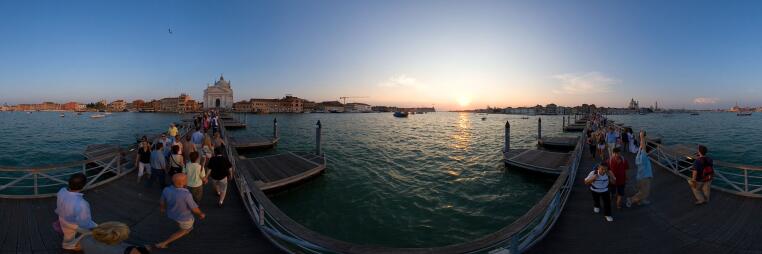Divine punishment as a turning-point: Venice and the plague epidemic of 1575-77
By art historian Jens Niebaum

While in times of modern biology we can explain the outbreak and spread of epidemics scientifically, for millennia such events were considered divine punishment of sinful humankind. Thus, an essential part of the countermeasures aimed at appeasing the enraged deity – through collective prayers, processions, and vows. When God lifted the punishment from the community affected, a special act of atonement was promised to him – votive masses, the building of an altar or monument, or even the erection of an entire church. A famous example is the devastating plague epidemic in Venice from 1575-77, which killed up to 400 people a day. On 8 September 1576, the doge, the head of the Republic, vowed to build a church dedicated to the saviour (later to become the famous Redentore Church of Palladio), and to hold an annual procession on the anniversary of the liberation from the plague, “in eternal memory of the beneficence received”.
This vow shows paradigmatically the multiple activation of time as a structuring factor. The text itself pointed far back into the past by comparing the doge with King David, who had appeased God’s wrath by erecting an altar at the place where his Solomon would later build the temple (1 Chr. 21; 2 Sam. 24). The interlacing of these temporal levels is taken up and expanded in a fresco inside the Redentore Church, where the doge and the senators with the model of the city of Venice kneel before God the Father in the circle of Mary and the city’s patron saint. The depiction is framed by an inscription with the promise of protection that God had once given to King Hezekiah for himself and his city (2. Kings 20:6). But, of course, the vow primarily points to the future: atonement is promised and an annual memorial procession is instituted. The procession was first held on the third Sunday of July 1577: a pontoon bridge built over gondolas led from the doge’s palace to the Giudecca, where the foundation stone of the new church had already been laid; a mass was celebrated there. Several temporal layers were thus interlaced in this “andata ducale” (“Corridor of the doge”): the memory of the plague, the countless victims and the vows, the Biblical reference to punishment and redemption, the warning to the present and the reference to the future until the Last Day, with the hope that God might spare the city from such punishment in the future. The supposed divine punishment was interpreted as a turning-point through recourse to the Old Testament, in that the atonement for past sins carried the promise of salvation for the future.
On the third Sunday of July, during the Festa del Redentore, the procession to the votive church is still held today, but since 1578 by means of two shorter bridges that cross the Grand Canal and the Canal della Giudecca, and since the end of the Republic in 1797 without the doge. A spectacular fireworks display is held at the Bacino di San Marco on the evening before, which brings together the entire city and its visitors. Thus, unlike in many other cases, the doge’s vow of 1576 continues to shape the city’s calendar, keeping alive the memory of the liberation from one of the worst disasters in its history.

